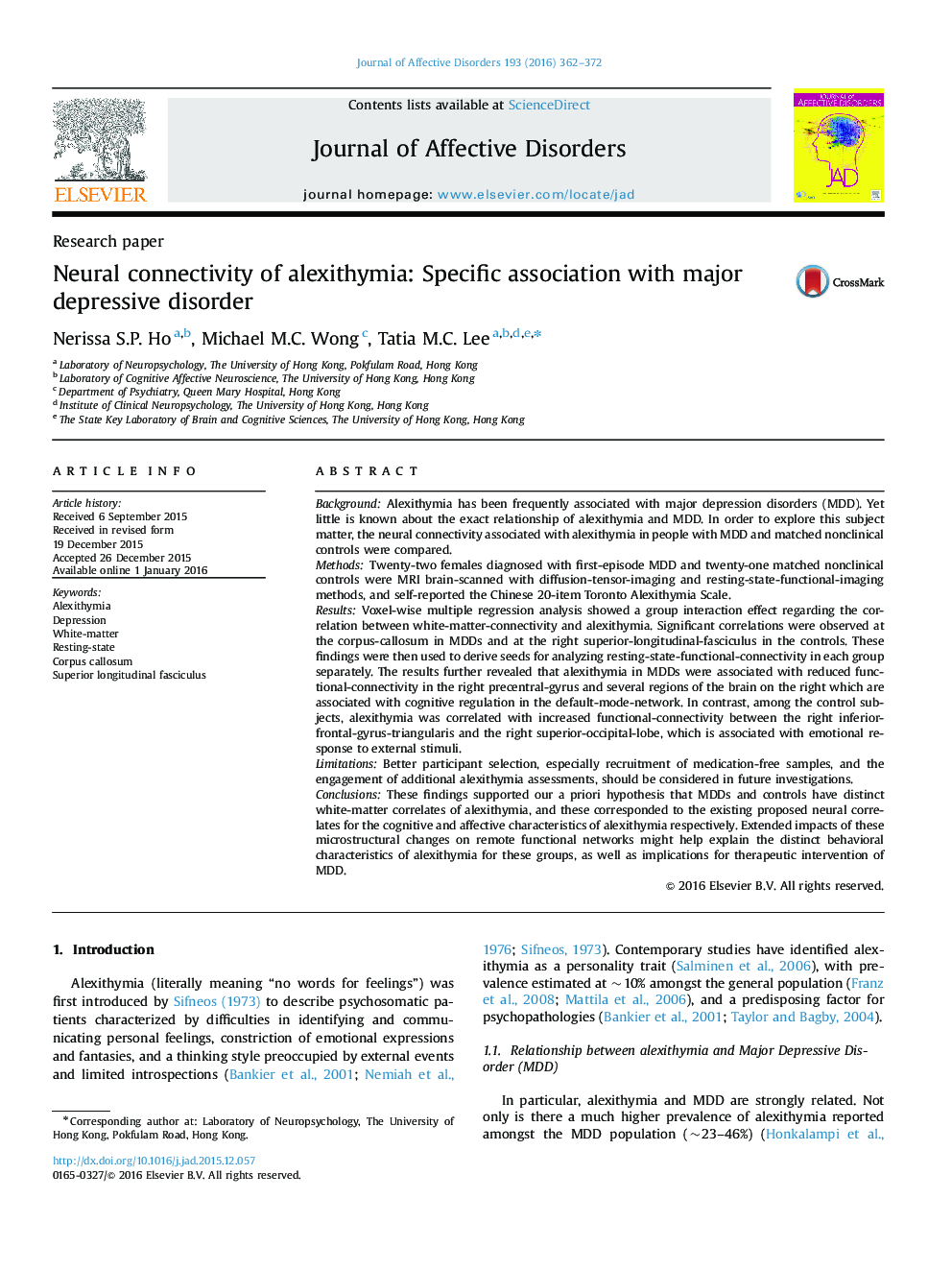| کد مقاله | کد نشریه | سال انتشار | مقاله انگلیسی | نسخه تمام متن |
|---|---|---|---|---|
| 6230508 | 1608132 | 2016 | 11 صفحه PDF | دانلود رایگان |
- White-matter correlates of alexithymia were distinct in depression.
- Cognitive alexithymia might predispose depression.
- Functional connectivity was associated with alexithymia in depression.
- The microstructural changes may explain alexithymia in depression.
BackgroundAlexithymia has been frequently associated with major depression disorders (MDD). Yet little is known about the exact relationship of alexithymia and MDD. In order to explore this subject matter, the neural connectivity associated with alexithymia in people with MDD and matched nonclinical controls were compared.MethodsTwenty-two females diagnosed with first-episode MDD and twenty-one matched nonclinical controls were MRI brain-scanned with diffusion-tensor-imaging and resting-state-functional-imaging methods, and self-reported the Chinese 20-item Toronto Alexithymia Scale.ResultsVoxel-wise multiple regression analysis showed a group interaction effect regarding the correlation between white-matter-connectivity and alexithymia. Significant correlations were observed at the corpus-callosum in MDDs and at the right superior-longitudinal-fasciculus in the controls. These findings were then used to derive seeds for analyzing resting-state-functional-connectivity in each group separately. The results further revealed that alexithymia in MDDs were associated with reduced functional-connectivity in the right precentral-gyrus and several regions of the brain on the right which are associated with cognitive regulation in the default-mode-network. In contrast, among the control subjects, alexithymia was correlated with increased functional-connectivity between the right inferior-frontal-gyrus-triangularis and the right superior-occipital-lobe, which is associated with emotional response to external stimuli.LimitationsBetter participant selection, especially recruitment of medication-free samples, and the engagement of additional alexithymia assessments, should be considered in future investigations.ConclusionsThese findings supported our a priori hypothesis that MDDs and controls have distinct white-matter correlates of alexithymia, and these corresponded to the existing proposed neural correlates for the cognitive and affective characteristics of alexithymia respectively. Extended impacts of these microstructural changes on remote functional networks might help explain the distinct behavioral characteristics of alexithymia for these groups, as well as implications for therapeutic intervention of MDD.
Journal: Journal of Affective Disorders - Volume 193, 15 March 2016, Pages 362-372
